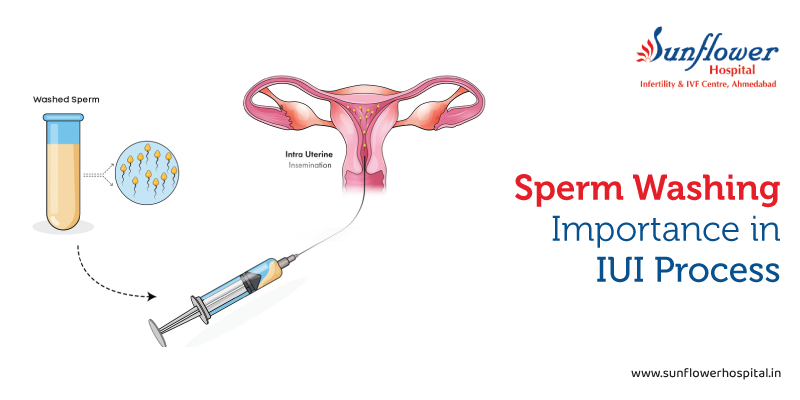Each step in fertility care is a calculated move toward a successful conception. Among these crucial steps is sperm washing, a complex laboratory process that may sound simple but holds immense importance in intrauterine insemination (IUI).
This process meticulously separates and concentrates the most motile, high-quality sperm, improving the chances for successful fertilization.
But the question is, what really goes on behind the scenes during the sperm washing process, and why is it considered indispensable in reproductive medicine?
To know the answers to these questions, keep reading this blog till the end.
What is Sperm Washing?
Sperm washing is the process where the sperm cells are removed from the semen fluid. This procedure is an important step in various fertility treatments offered, like IVF with intracytoplasmic sperm injection (ICSI), sperm cryopreservation, and IUI treatment in India. If you are undergoing any of these treatments, it’s highly likely that sperm washing will be a part of your process.
Why is Sperm Washing Needed?
Well, there are several scientific reasons why semen samples are washed before consulting an infertility specialist in India. It is important to undergo sperm washing procedures because semen contains prostaglandins that can cause severe cramping if introduced inside the uterus.
Additionally, seminal fluid contains debris such as white blood cells and dead sperm, which can interfere with fertilization. It may also harbor bacteria or viruses, posing a risk of infection if introduce into the uterine cavity.
During sexual intercourse, the cervix acts as a crucial gatekeeper, protecting the uterine cavity and upper reproductive tract from prostaglandins, debris, and potentially harmful microorganisms present in semen. As the seminal fluid passes through, the cervix functions as a natural “sperm filter”, helping to remove unwanted substances and select healthier sperm.
Although fertility treatments like IUI treatment bypass the cervix entirely, this protective function must be replicated in the lab. That’s where sperm washing comes in, a process designed to isolate motile (actively swimming) sperm from non-motile or dead sperm while also eliminating prostaglandins, bacteria, and other impurities to optimize fertilization outcomes.
How is Sperm Washing Done?
Sperm washing begins once the semen sample is collected. The technique used varies based on the sample quality and the intended fertility treatment. Ultimately, the process yields a small, concentrated sample of highly motile sperm, ideal for safe use in the sterile environment of the uterine cavity during an IUI procedure.
Density Gradient Sperm Wash: This initial sperm washing method separates dead sperm, white blood cells, and other debris from healthy sperm. It is usually used for semen samples with good quality, high sperm count, motility, and normal morphology, resulting in a purified, concentrated sample perfect for IUI.
Swim Up Technique
This method involves layering culture media over a centrifuged semen pellet in a conical tube. After an hour, motile sperm that swim to the top is collected, ensuring that only the healthiest, most active sperm are used for IUI, typically from samples with the normal count, motility, and morphology.
Simple Sperm Wash
The final technique is simple sperm wash, where culture media is added to the semen sample and then centrifuged. This method minimizes the loss of viable sperm and is especially suitable for semen samples with low count, motility, and morphology.
In conclusion, these are some of the things you need to know about sperm washing. However, if you are willing to undergo this procedure and want the cost of this procedure along with the IUI treatment cost in India, visit your nearest IVF centre today!


Leave a Comment